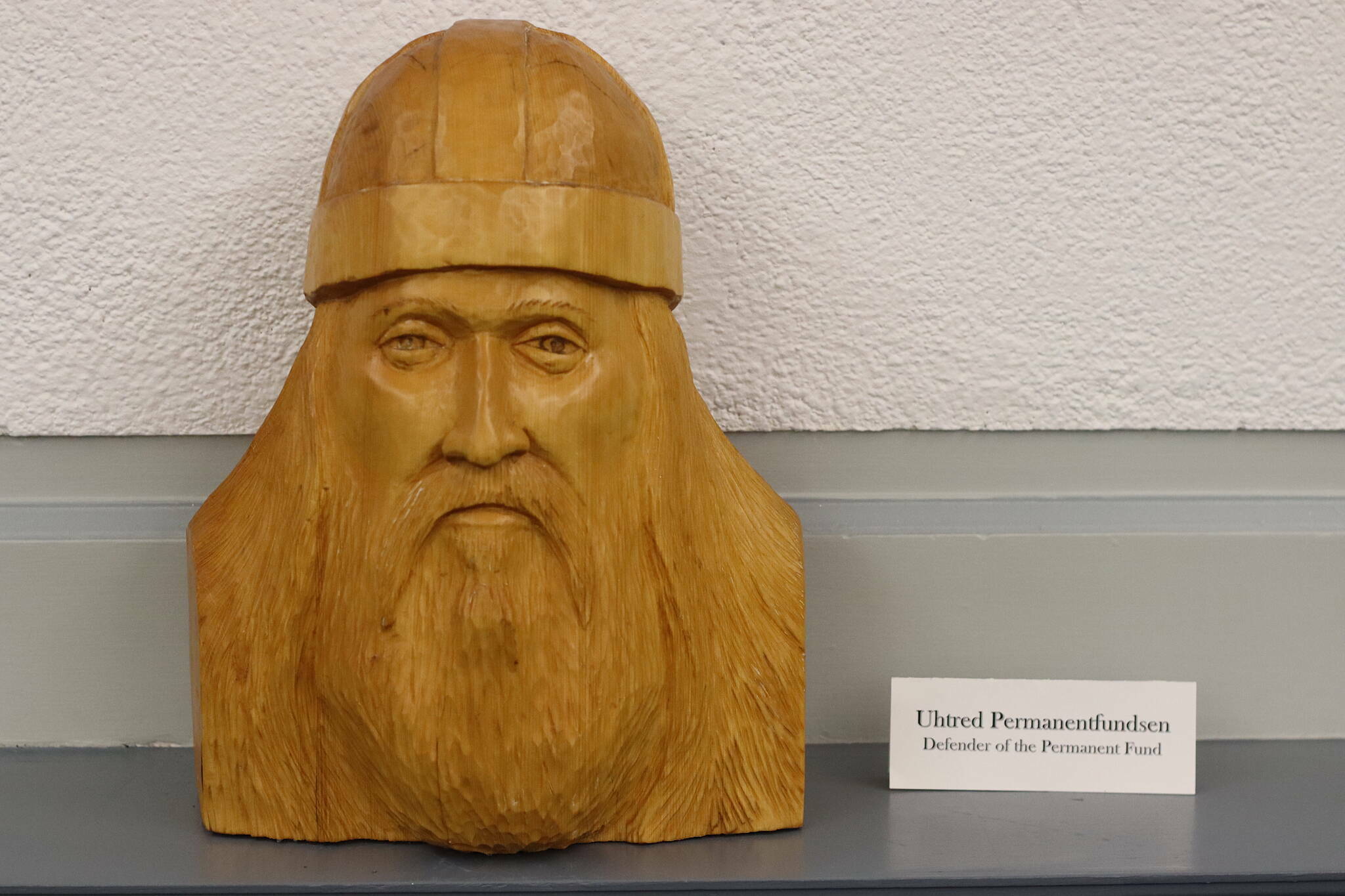A Permanent Fund dividend of about $1,300 this year is essentially set in stone now that Gov. Mike Dunleavy signed the state budget this week. Since that’s a huge dropoff from the $3,284 payouts last year, the question for policymakers and residents is if such lower dividends are going to be the “new normal.”
Dunleavy, who highlighted last year’s big PDF during his reelection campaign, proposed a “statutory” dividend in his budget bill that again would have topped $3,000. The governor, the Republican-led House majority and many residents spent the legislative session fighting for either that PFD or a somewhat lower dividend of about $2,700 based on a different fiscal formula.
But those arguments ultimately lost out as the budget — and dividend — largely crafted by the bipartisan Senate majority is what the Legislature passed and Dunleavy signed. The lower PFD is the key element that allows the $6.2 billion budget to show a projected surplus of about $300 million, whereas the larger dividends would have resulted in deficits in the hundreds of millions of dollars.
The currently forecast PFD this year of $1,304 is based on a so-called “75-25” allocation of available earnings from the Permanent Fund, with the larger percentage of that split used for state spending and the smaller share for dividends. The House majority’s budget contained a “50-50” PFD, a formula that has been used in some recent years.
An option for Dunleavy could have been to veto the budget bill and order the Legislature back into a special session in the hope a budget with a different PFD payout would result. But that would have required a significant shift in votes among both House and Senate members who agreed to the spending plan already passed.
However, just because the governor chose not to engage in such a battle this year to get a bigger dividend doesn’t mean he won’t renew the fight next year, people involved in the debate said this week.
“I expect a statutory dividend in his budget,” said state Sen. Bert Stedman, a Sitka Republican who co-chairs the Senate Finance Committee. Meanwhile “it’s more likely than not the Senate will reaffirm 75-25.”
The key factor will be the state’s revenue situation, which depends largely on oil prices, said state Rep. Dan Ortiz, a Ketchikan independent who is part of the Democratic-led House minority. He sponsored a bill for a permanent 75-25 PFD calculation, which he said may have a reasonable chance of passage if the revenue picture is less than rosy, but a decisive number of policymakers could also be swayed the other way.
“If for some reason we get a big spike in revenue I’d expect we’ll see a strong call for a big PFD,” he said.
Shannon Mason, a spokesperson for the governor, stated in an email Tuesday “The governor has always supported a full statutory dividend for Alaskans and believes it’s their fair share of Alaska’s resources.”
The need for a sustainable long-term fiscal plan that results in balanced budgets annually without depleting the state’s reserve funds was one of the most oft-discussed issues of the legislative session — a continuation of discussions that have occurred for years.
Stedman, among others, said the 75-25 works as the cornerstone of such a plan without the need for new revenue measures such as a significant sales or income tax. But other lawmakers argue smaller dividends are taking money away that Alaska residents are entitled to.
“The cost of our state bureaucracy continues to grow, and that growth is fueled by Permanent Fund earnings,” state Rep. Ben Carpenter, a Nikiski Republican who chairs the House Ways and Means Committee, said in a prepared statement after Dunleavy signed the budget on Monday. “The Permanent Fund dividend in the FY24 budget was reduced by $881.5 million to pay for state government. In other words, a portion of $881.5 million won’t be spent on small business in Alaska in FY24.”
But even among Dunleavy supporters, there’s recognition that lower PFDs may have to be part of Alaska’s future as oil revenue continues its general decline.
“In my judgment what it comes down to is if we’re going to maintain the kind of dividends people want we’re going to have to impose an income tax and I oppose an income tax,” said Denny Dewitt, a Juneau resident who has spent many years working for legislators and several governors, including Dunleavy. “Things are different than they were three years ago or five years ago. The economics really don’t support a huge dividend.”
• Contact Mark Sabbatini at mark.sabbatini@juneauempire.com or (907) 957-2306.

